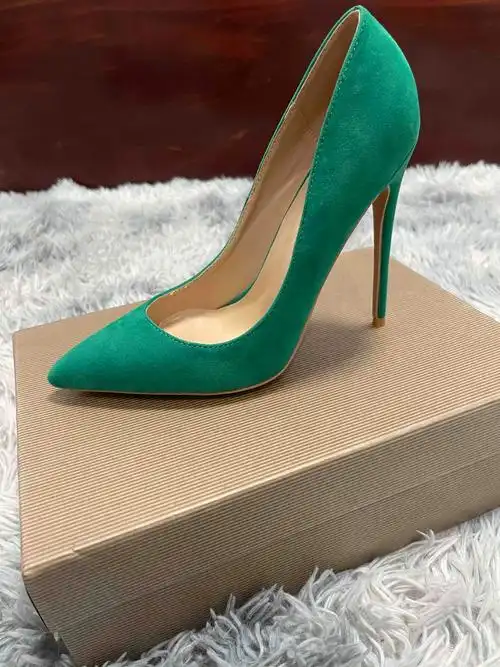
Learn how global brands leverage Chinese export-oriented shoe factories for cost-effective OEM manufacturing. Discover key strategies for compliance, quality control, and seamless bulk shipping.
—
Introduction
China dominates 75% of global footwear exports, serving as the backbone of international retail chains and DTC brands. For businesses seeking scalable, cost-efficient production, partnering with foreign trade shoe factories specializing in export OEM services ensures compliance with international standards, scalable order volumes, and end-to-end production support. This guide unpacks how to navigate the complexities of export-oriented footwear manufacturing.
—
Why Choose Export-Oriented Shoe Factories?
1. Global Compliance Expertise
Leading factories adhere to:
– ISO 9001:2015 and ISO 14001 certifications for quality and sustainability
– REACH and RoHS chemical regulations for EU markets
– ASTM F2413 and EN ISO 20345 safety standards for US and global markets
2. Cost Efficiency at Scale
Export-focused factories optimize shipping logistics, bulk material sourcing, and labor costs, reducing per-unit expenses by 25–40% compared to domestic production.
3. Scalable Production Capacity
From 500-pair prototypes to 50,000-pair bulk orders, factories utilize automated cutting systems and lean manufacturing to meet tight deadlines.
—
Step-by-Step Process for Export OEM Footwear Production
Phase 1: Design & Technical Specifications
– Submit CAD files or product specs (materials, sizes, color codes).
– Factories conduct technical feasibility analysis (e.g., sole compatibility, upper stitching).
– Request 3D prototypes for design validation (cost: $300–$800 per iteration).
Phase 2: Material Sourcing & Compliance
– Factories source materials compliant with target markets:
– EU: REACH-certified dyes and recycled materials
– US: CPSIA-compliant textiles and phthalate-free adhesives
– Negotiate material costs (e.g., genuine leather vs. synthetic blends).
Phase 3: Mass Production & Quality Assurance
– MOQ: Minimum orders start at 300 pairs for niche designs.
– Production Timeline: 30–45 days (extended for complex constructions like waterproof footwear).
– QC Inspections:
– Pre-production sample approval
– AQL 2.5 random checks during production
– Final random inspection before shipment
Phase 4: Logistics & Documentation
– Choose shipping terms: FOB, CIF, or DDP.
– Ensure export documentation includes:
– Commercial invoice
– Packing list
– Bill of Lading (B/L)
– Certificates of Origin (COO)
—
Critical Challenges & Solutions
Challenge 1: Sizing Localization
– Solution: Factories integrate regional foot databases (e.g., US vs. EU sizing) into lasts.
Challenge 2: Intellectual Property Risks
– Solution: Sign NDAs and use factories with in-house design teams to limit third-party exposure.
Challenge 3: Customs Delays
– Solution: Work with factories that offer DDP shipping or partner with trusted freight forwarders.
—
Cost Breakdown & Profit Maximization
Component Cost Range ExportSpecific Notes
Base Shoe Model $4–$9 per pair Lower for bulk orders (≥10,000 pairs)
Compliance Certification $500–$2,000 onetime Required for EU/US markets
Shipping (FOB) $1.2–$3 per pair Varies by container type (20ft/40ft)
Packaging $0.3–$0.8 per pair Custom branding allowed
Profit Tip: Reuse molds for seasonal collections to amortize upfront tooling costs.
—
FAQs: Export-Oriented Shoe Factory Partnerships
Q: What certifications are required for EU market entry?
A: Factories must provide REACH compliance certificates and CE marking for safety standards.
Q: Can I mix product styles in a single order?
A: Yes, but factories charge a $50–$200 setup fee per design change.
Q: How to handle returns due to defects?
A: Include a defect clause in contracts (e.g., ≤1% acceptable rate). Factories often cover rework costs.
—
Conclusion
Export-oriented shoe factories streamline global market entry by combining cost efficiency, regulatory expertise, and scalable production. By prioritizing factories with ISO certifications, transparent pricing, and proven logistics networks, brands can mitigate risks and focus on scaling their operations. Start by sharing your technical specifications with verified manufacturers and requesting detailed cost breakdowns today.
—
SEO Optimization Strategy:
– Primary Keywords: “foreign trade shoe factory export OEM,” “shoe factory export agency,” “bulk footwear export”
– Secondary Keywords: “ISO-certified footwear manufacturer,” “global shoe shipping standards,” “FOB shoe factory terms”
– Semantic Variations: Terms like “export compliance footwear,” “wholesale OEM shoes,” “custom shoe last manufacturing” align with buyer intent.
– Internal Linking: Connect to related guides (e.g., “How to Prepare Export Documentation for Footwear”).
– Content Refresh: Update compliance requirements biannually to reflect regulatory changes.
This structure enhances search visibility for commercial queries while positioning your factory as a trusted partner in global footwear sourcing.
Article link:https://www.vlefooena.com/manufacturer/3660/

No reply content